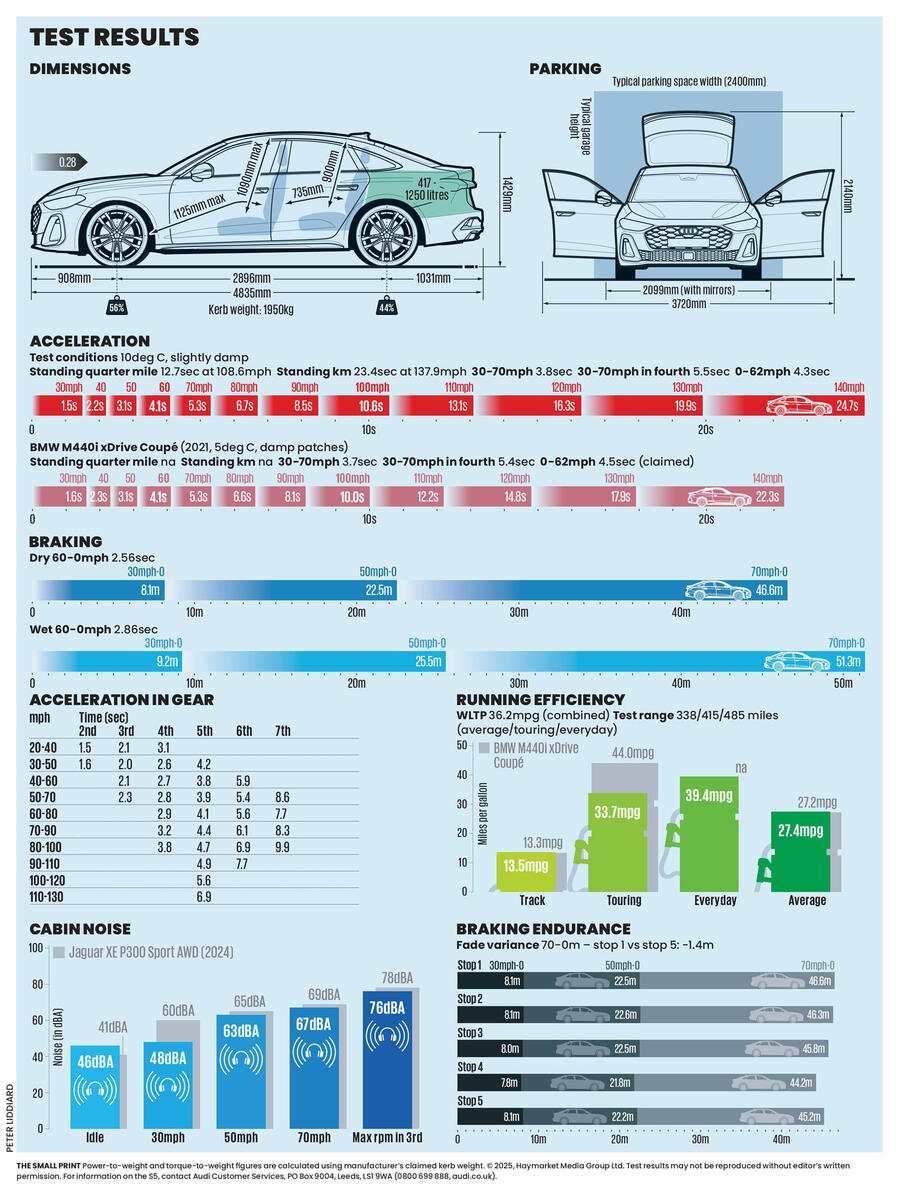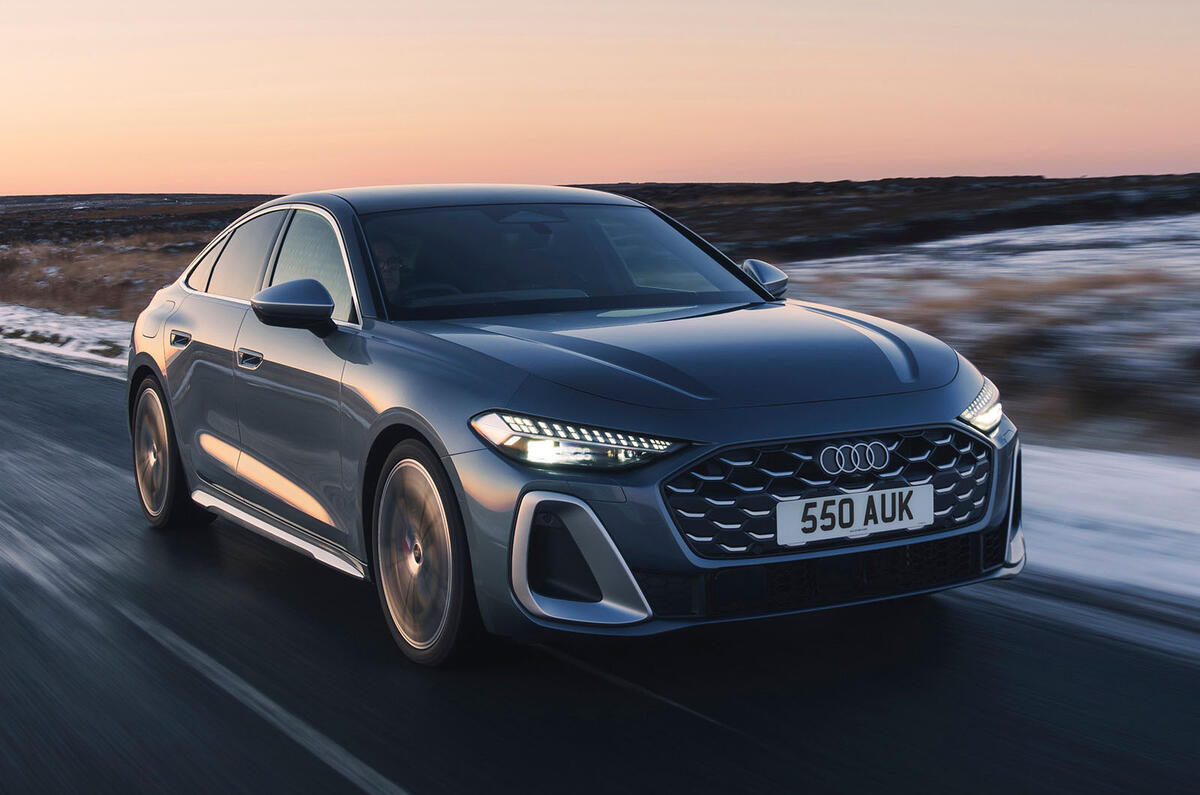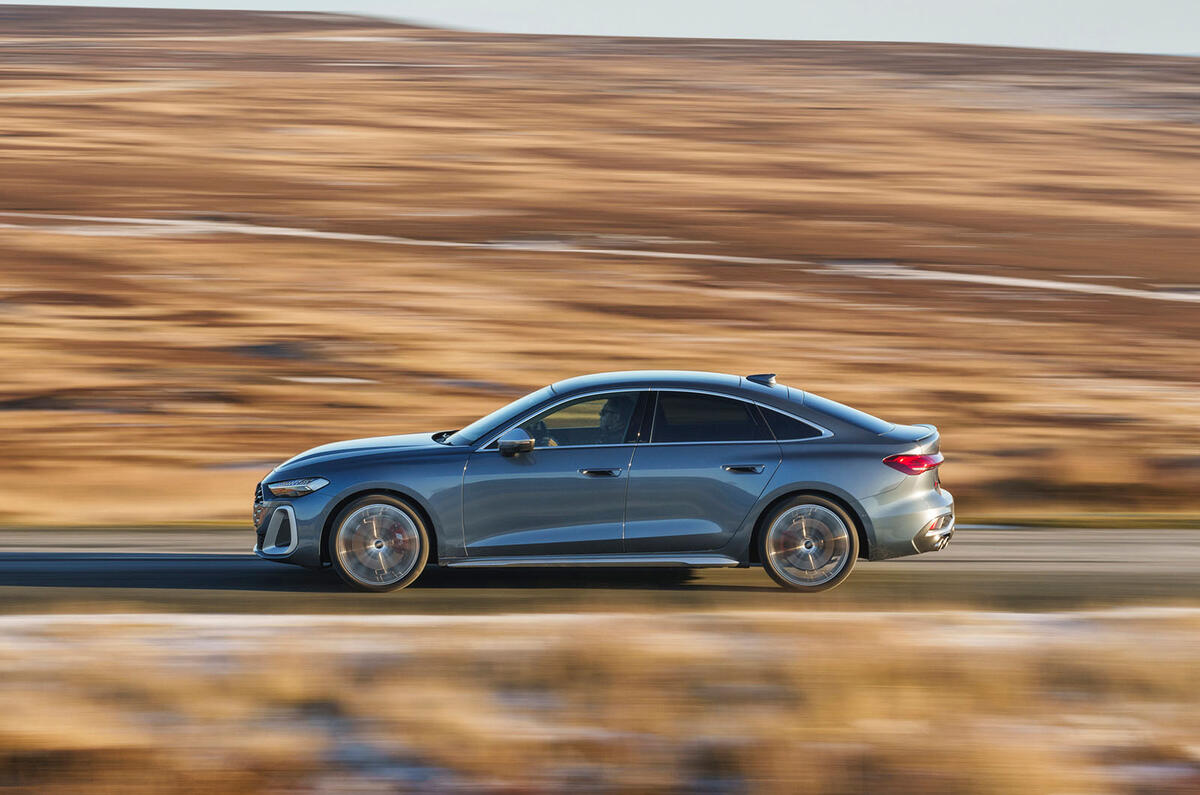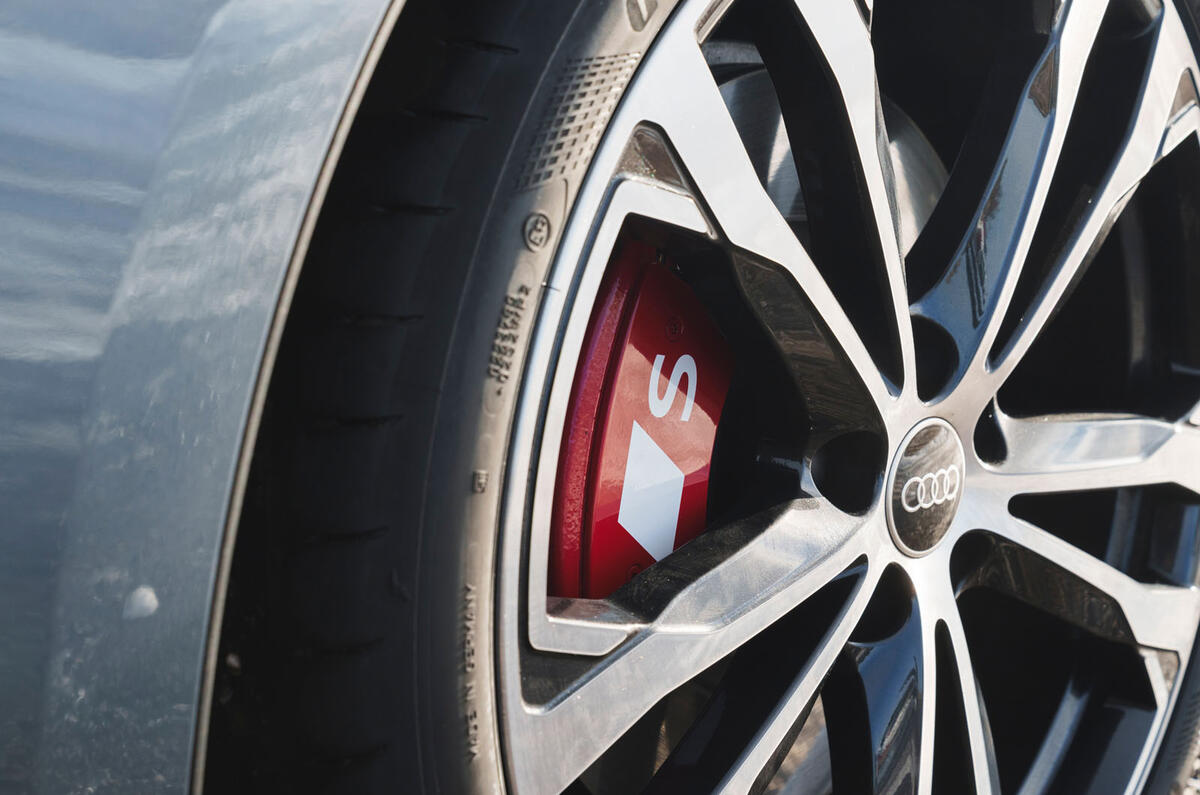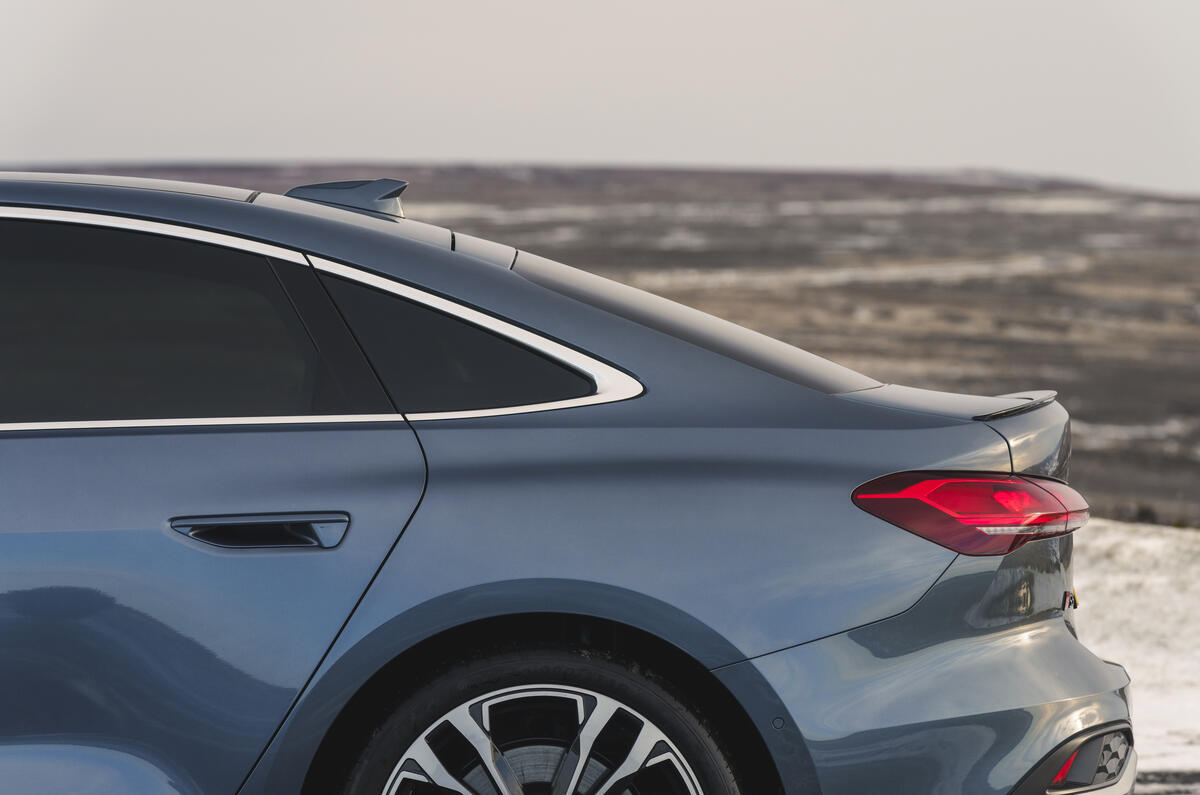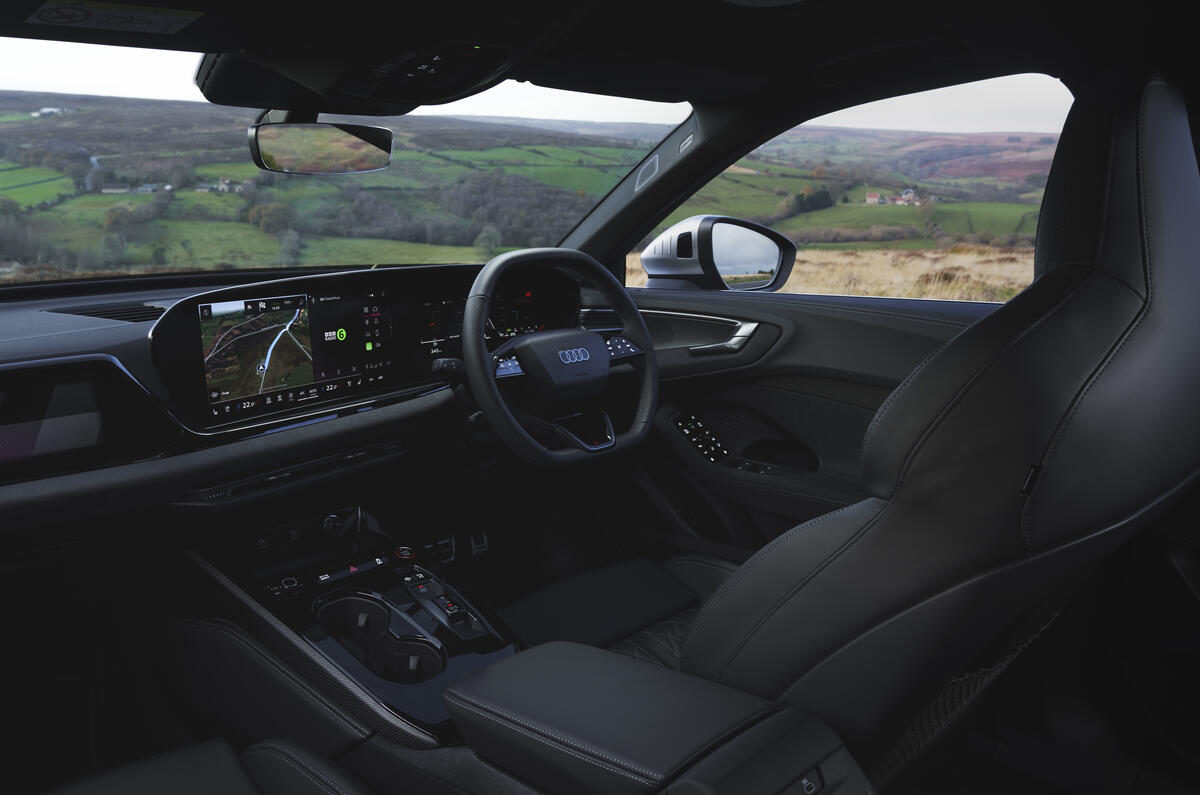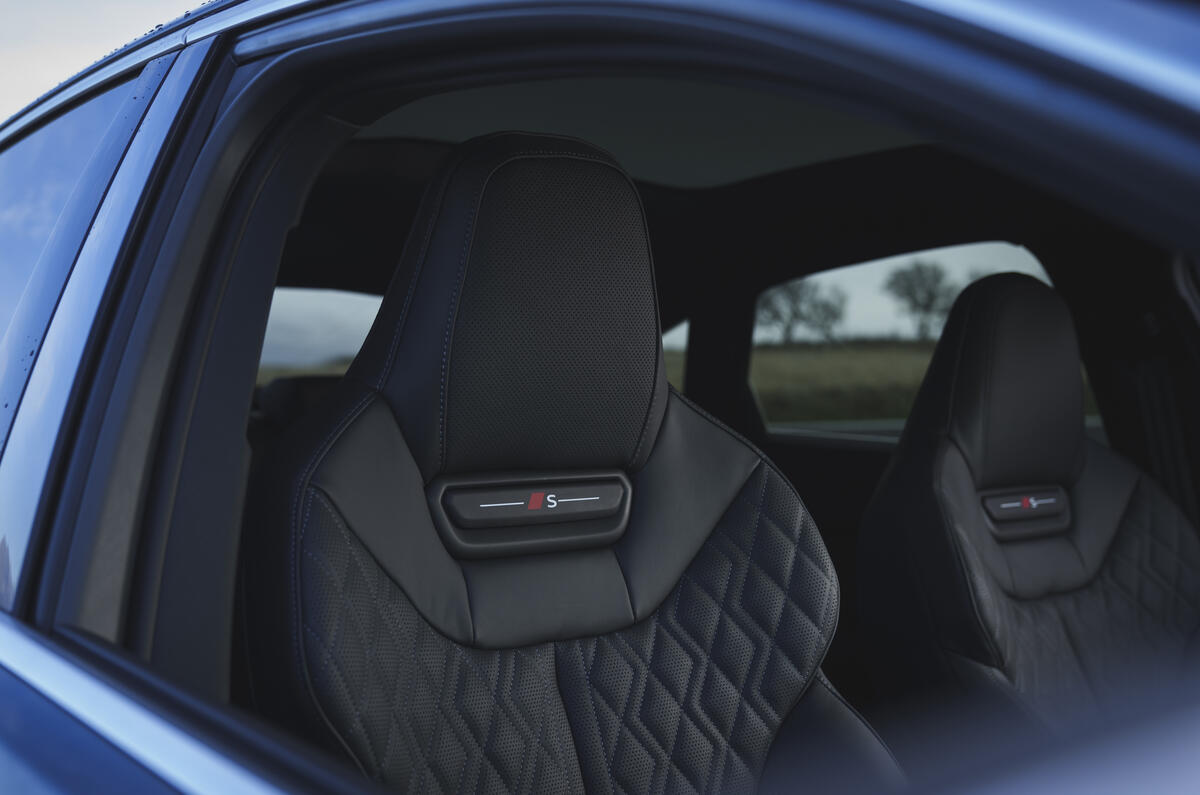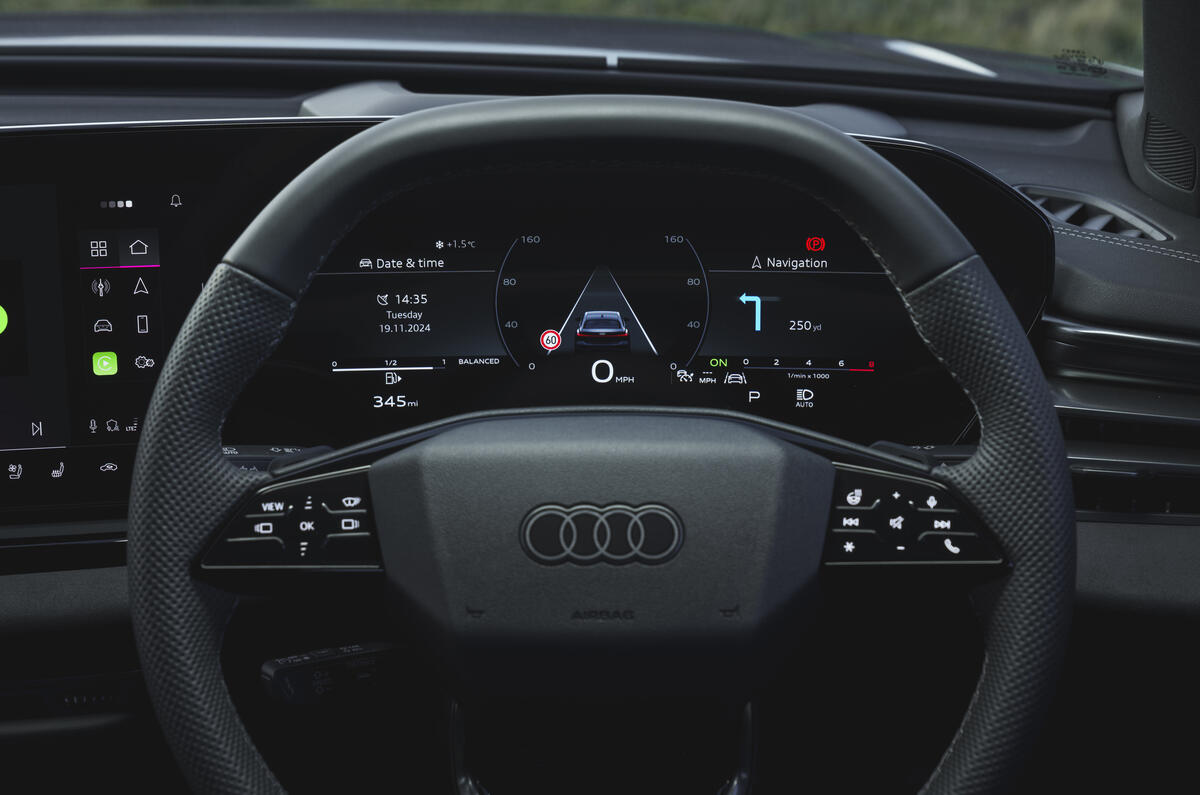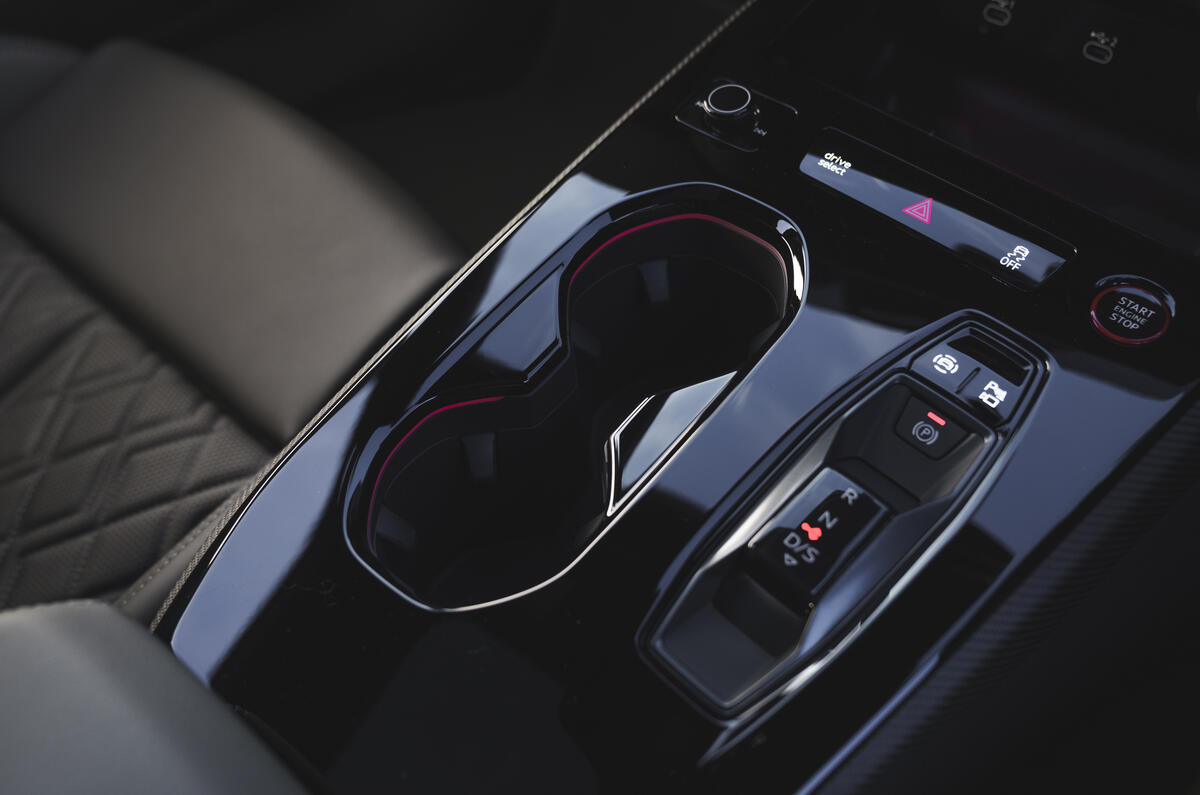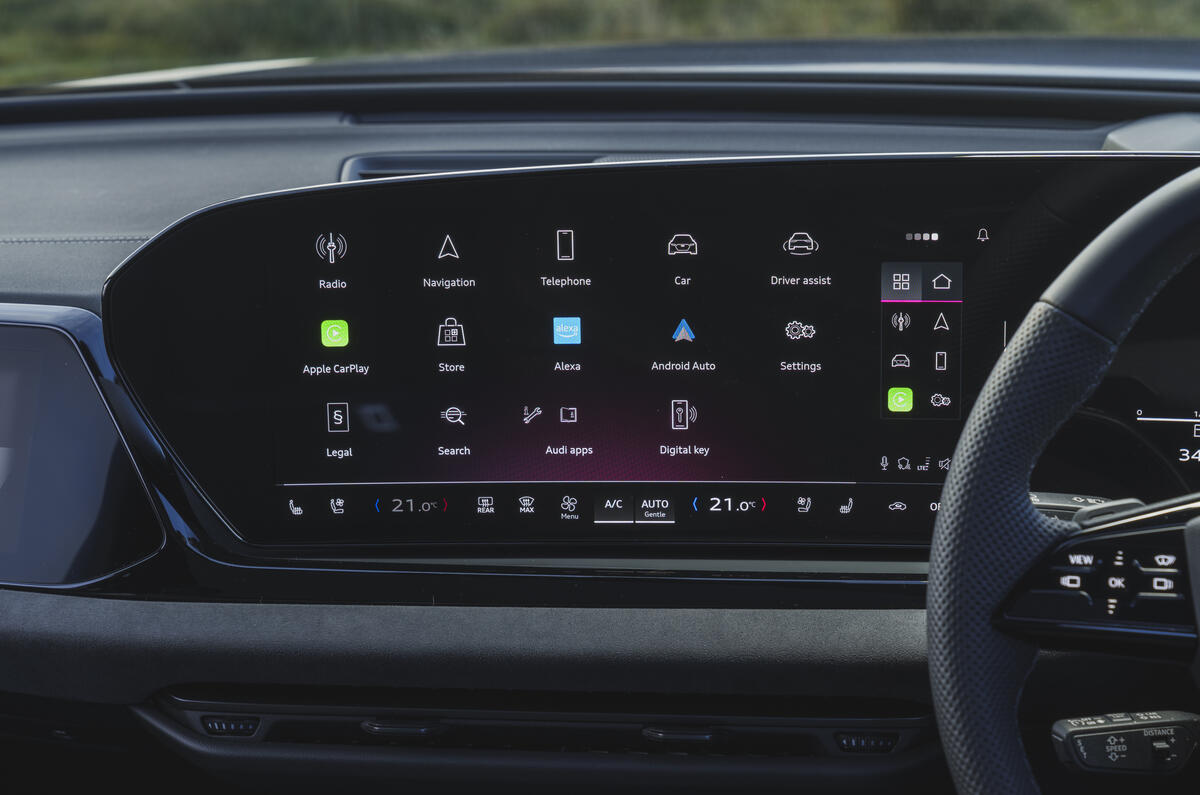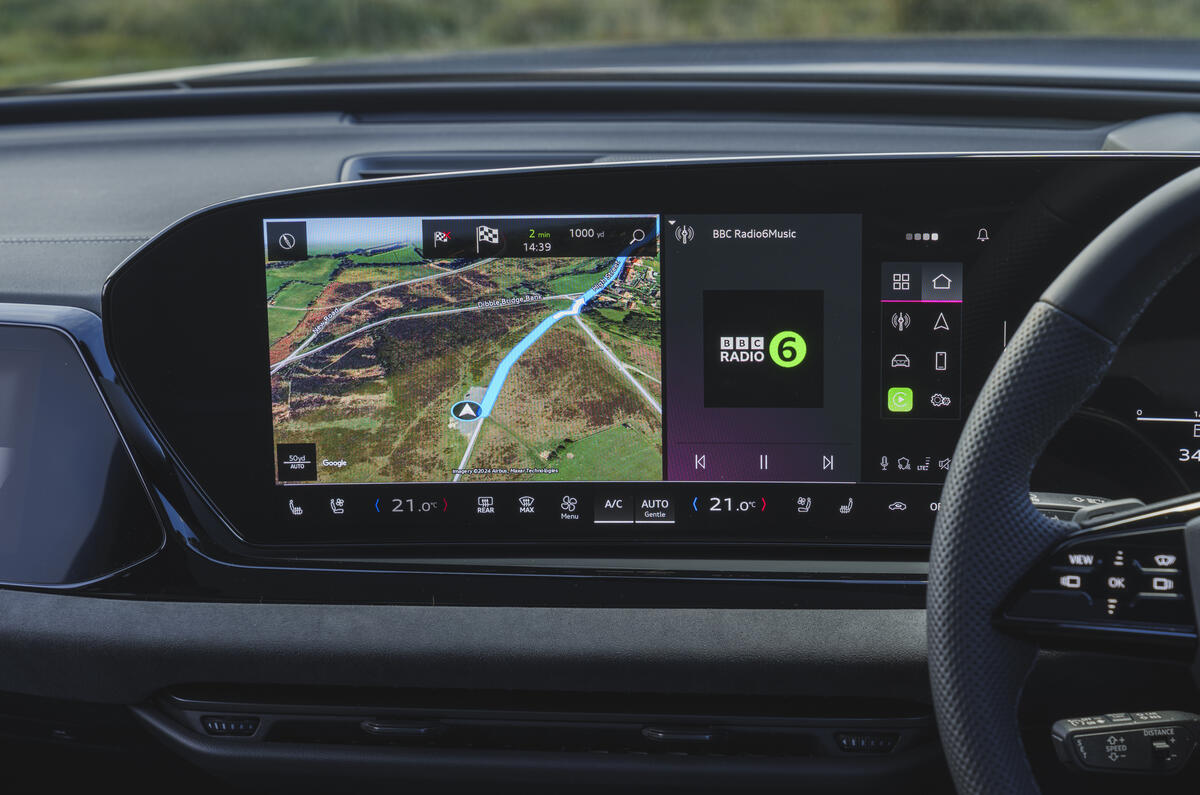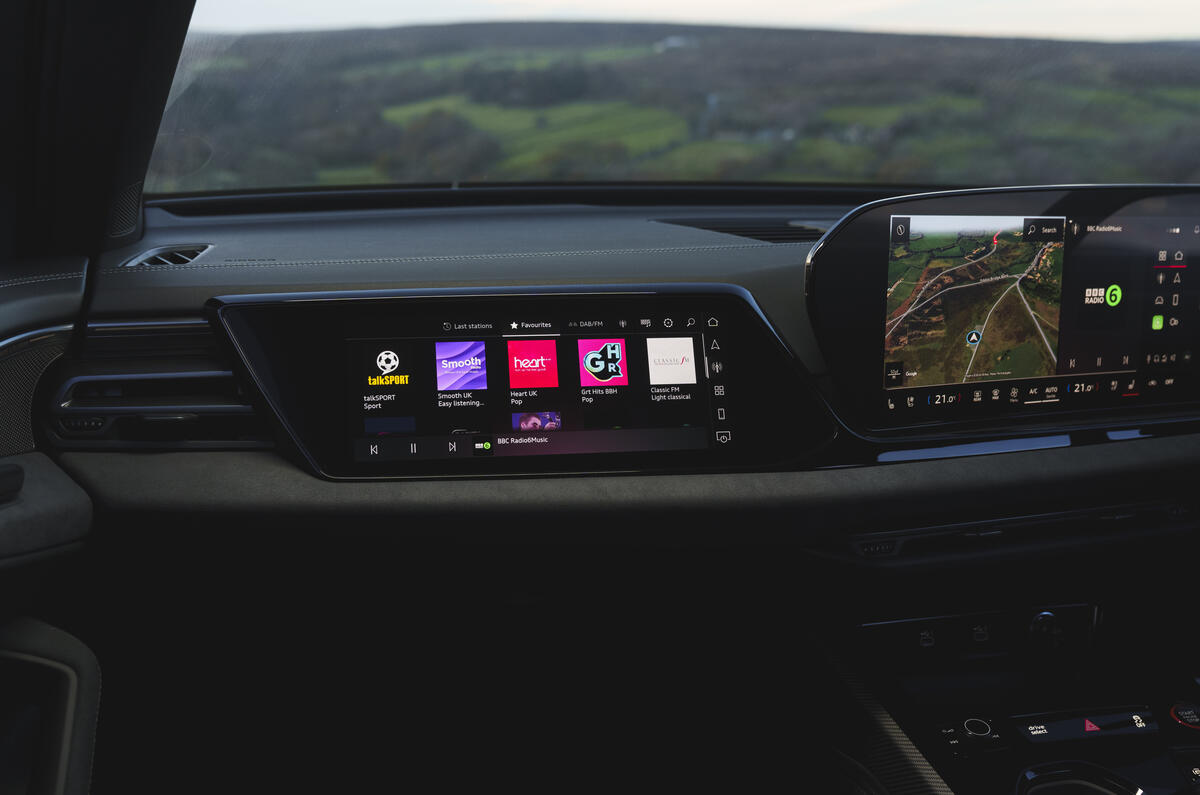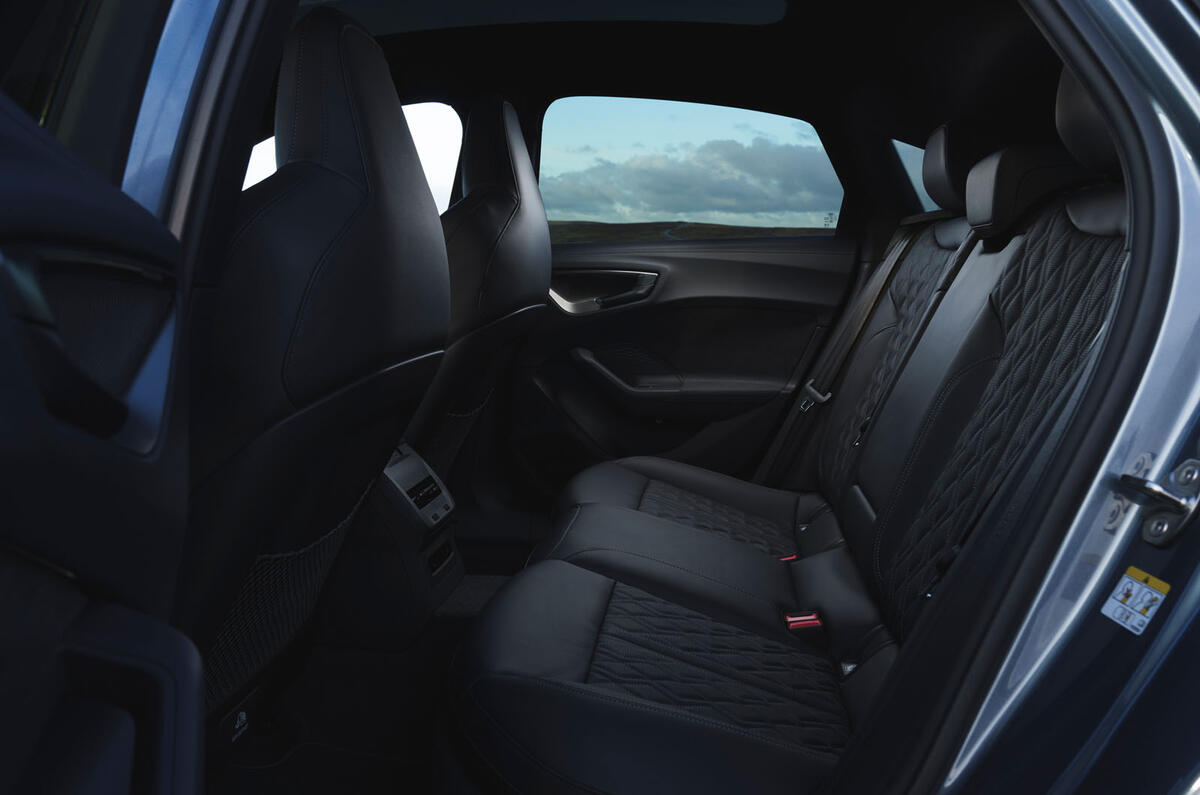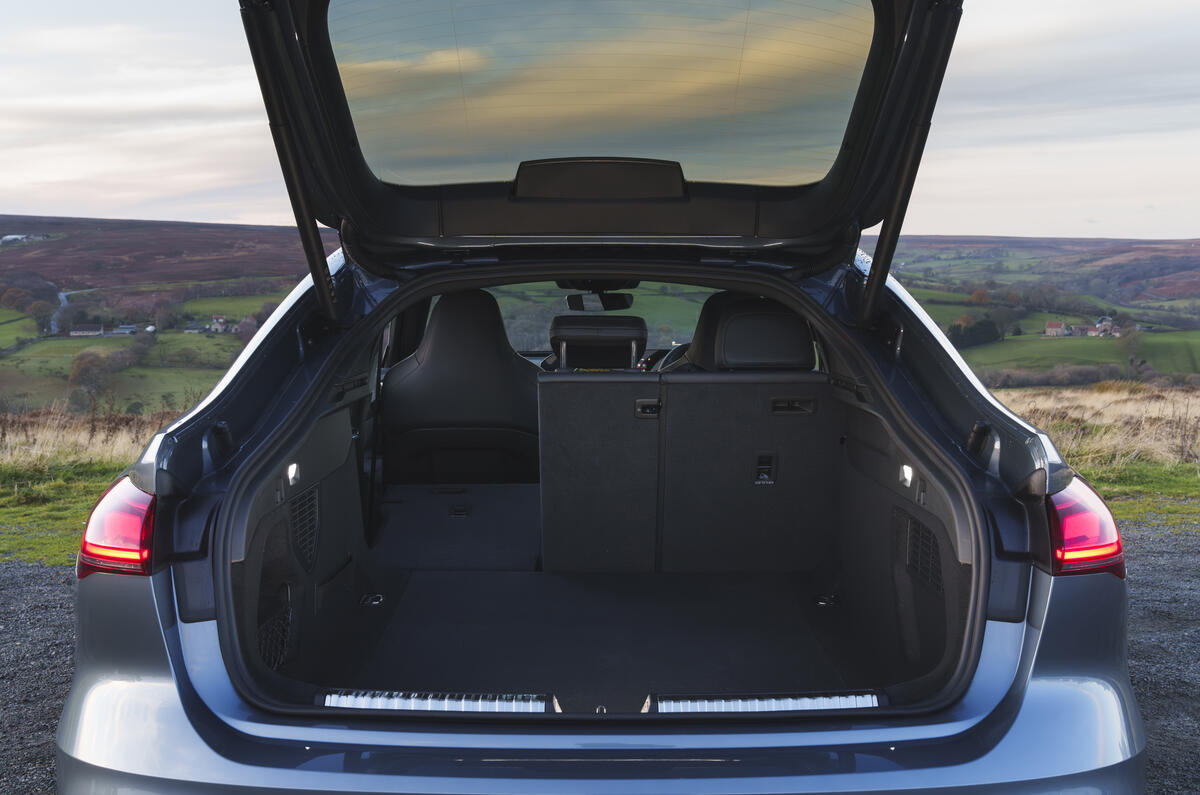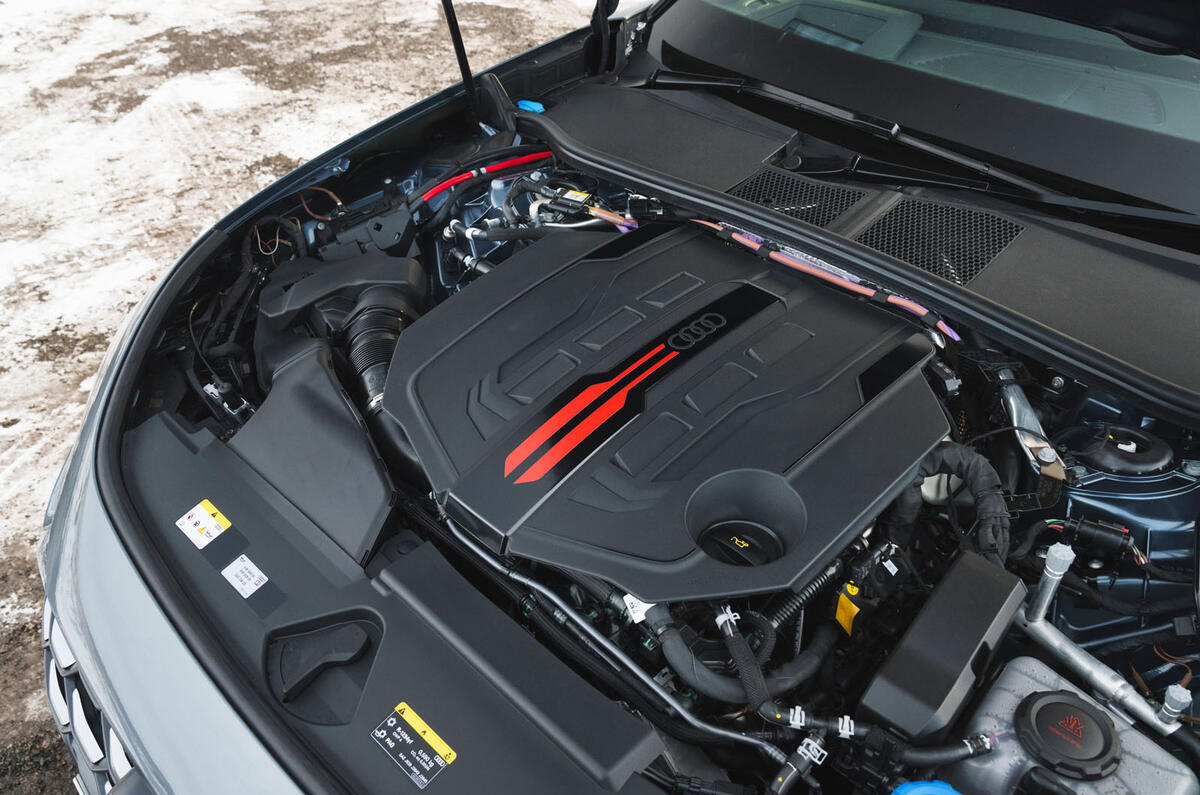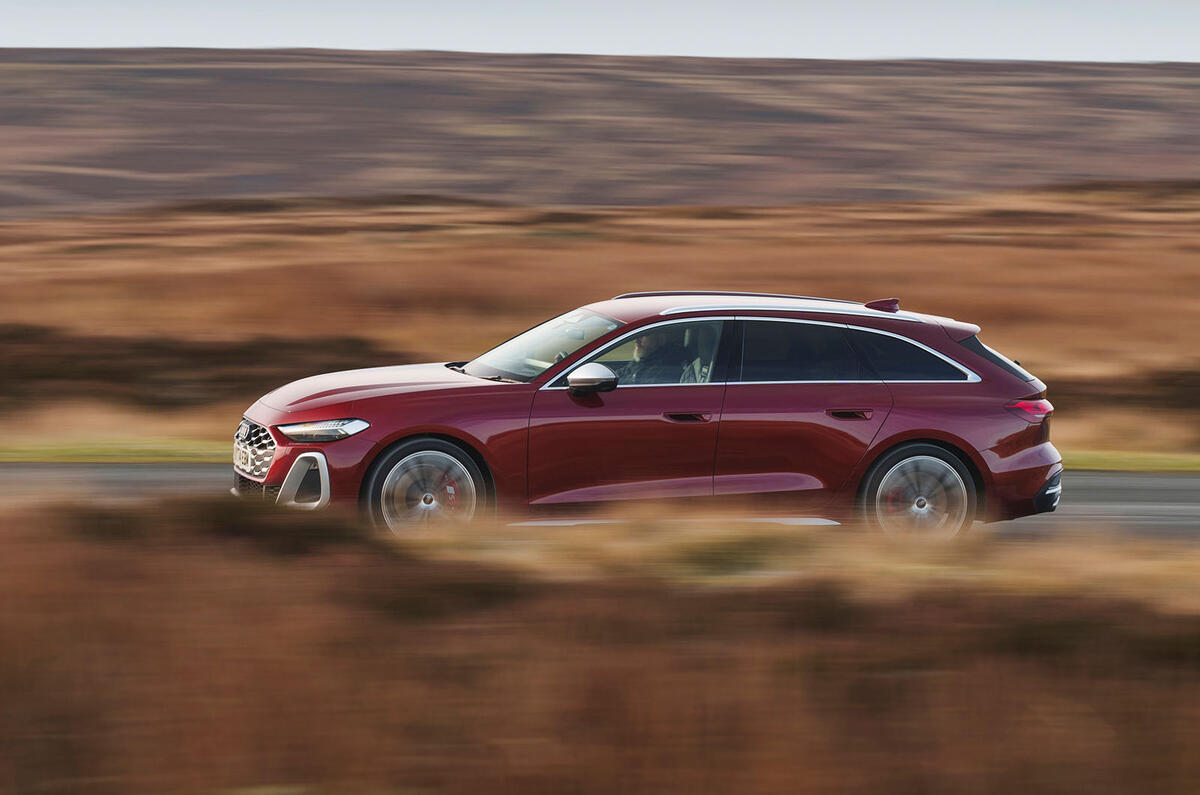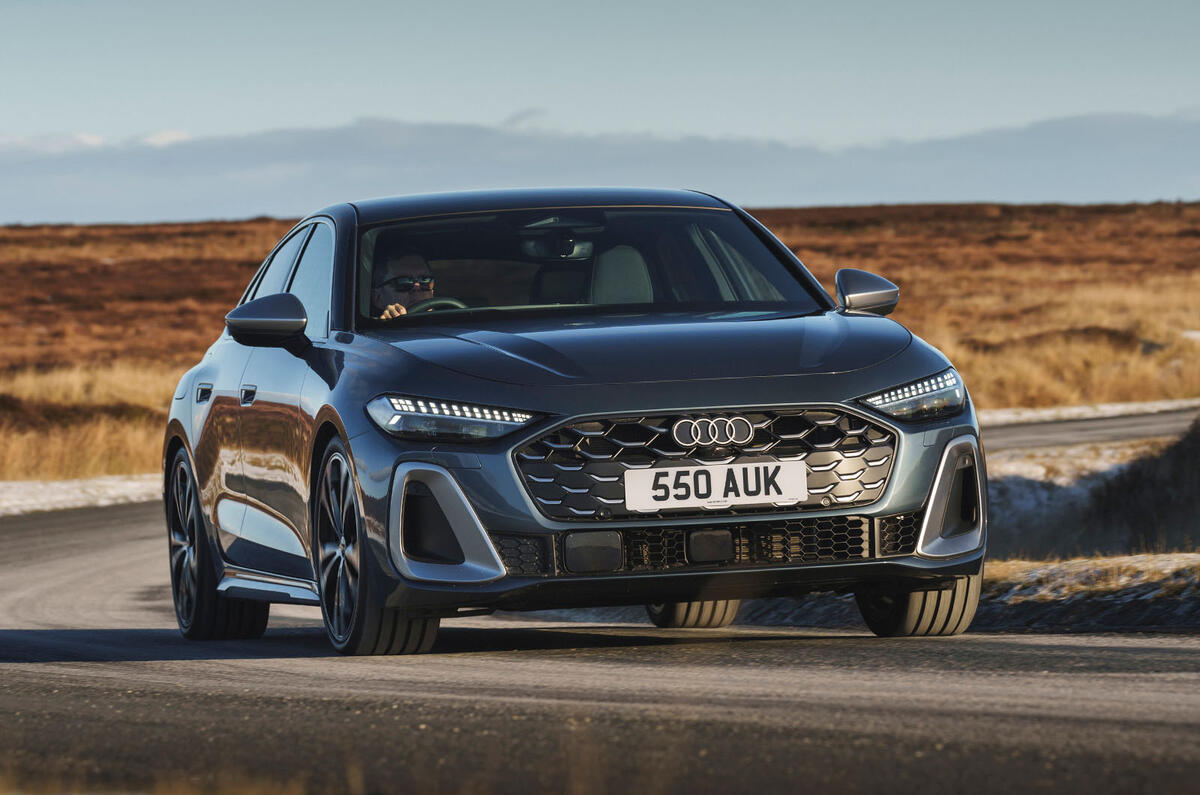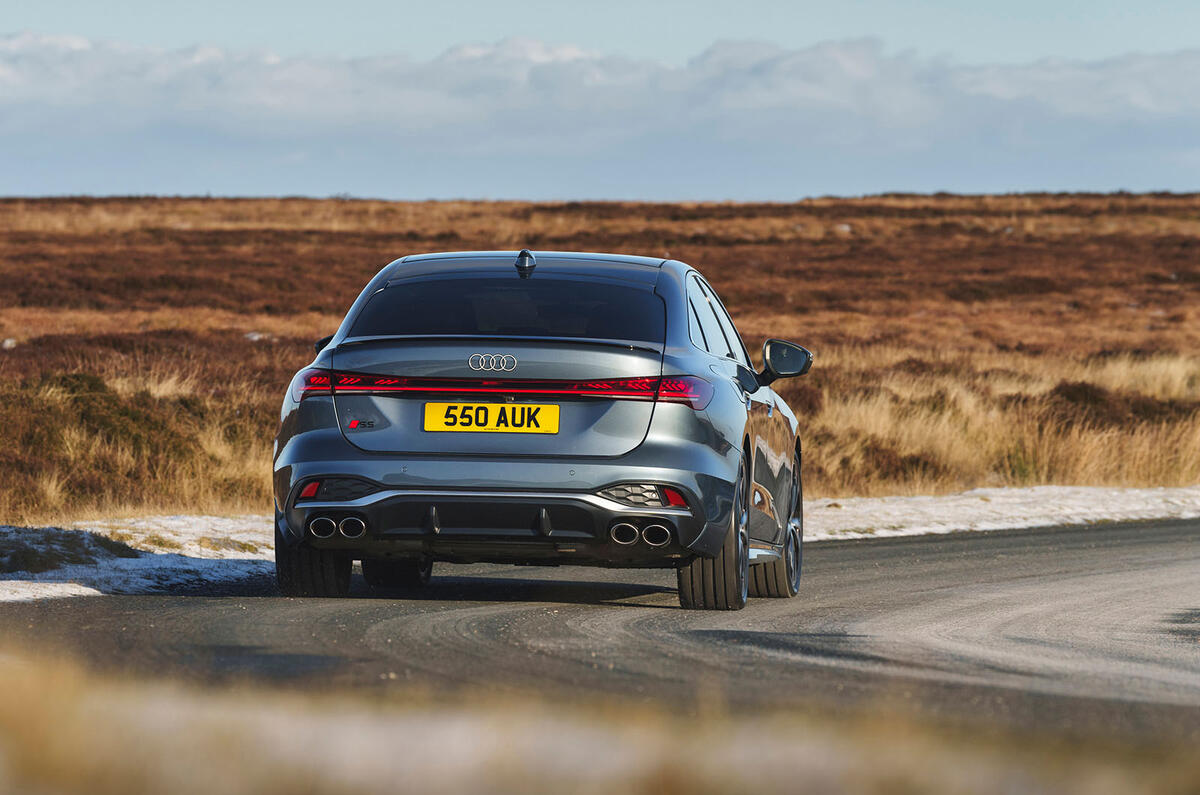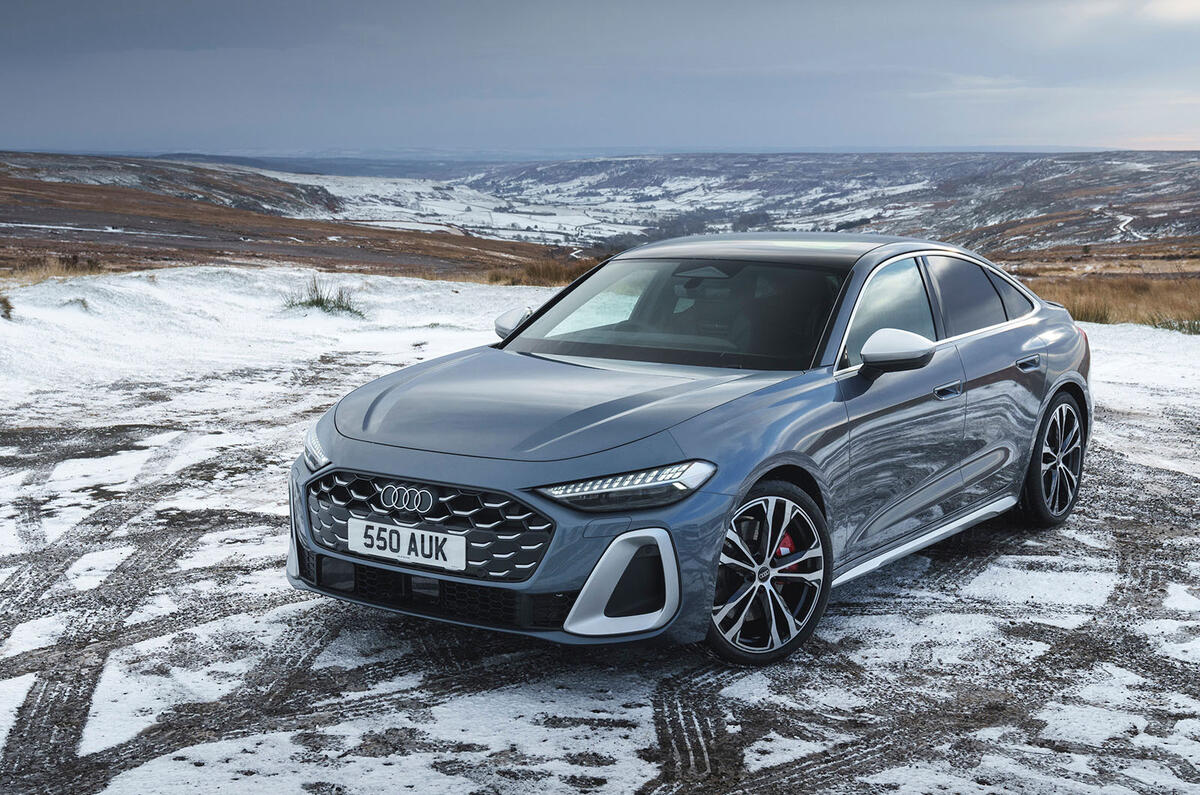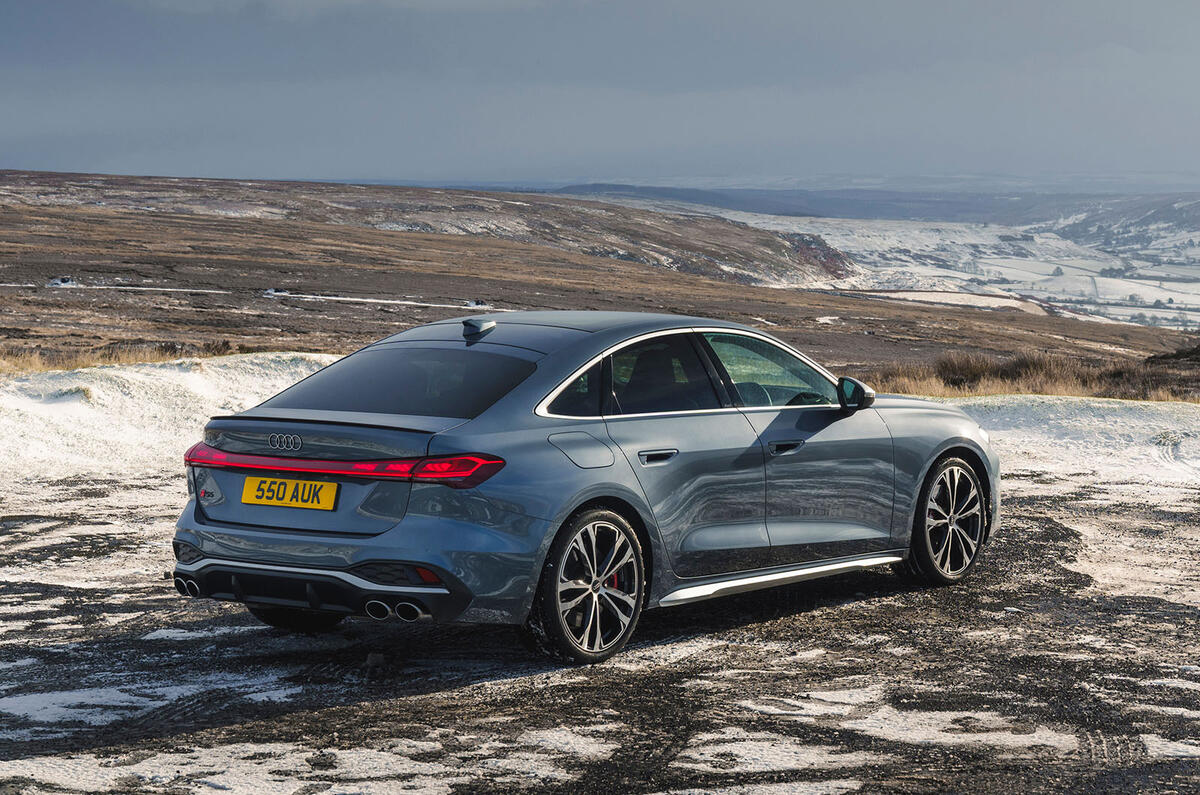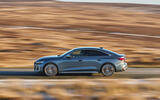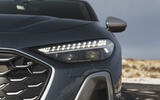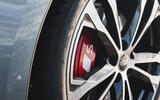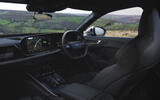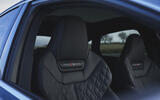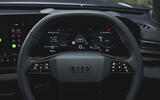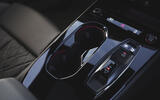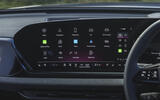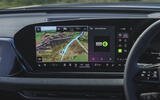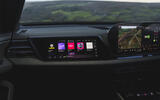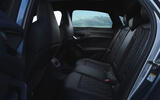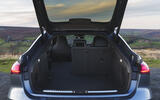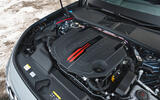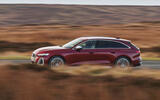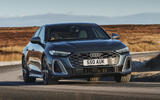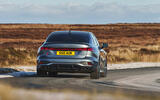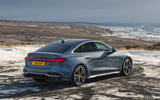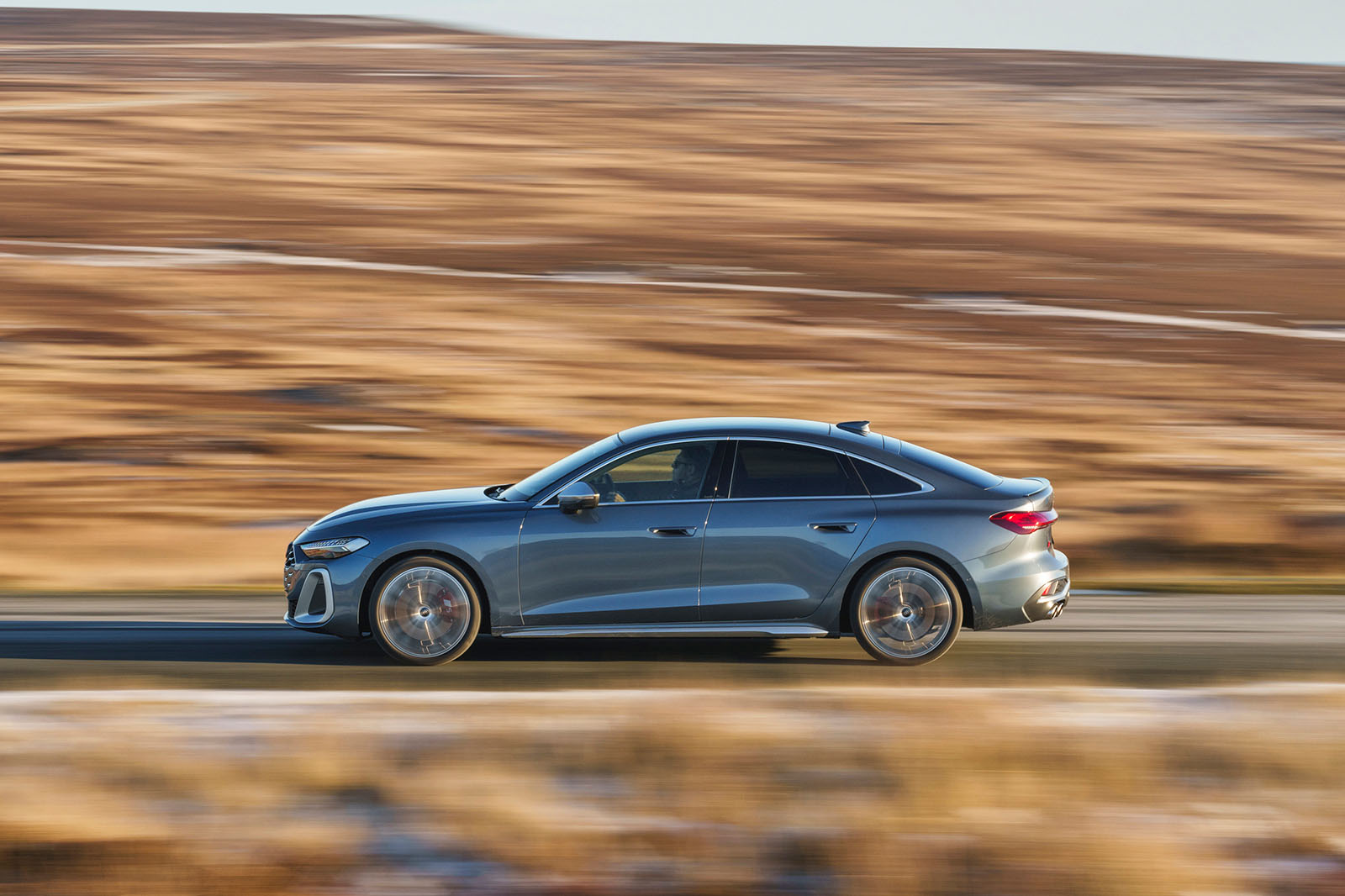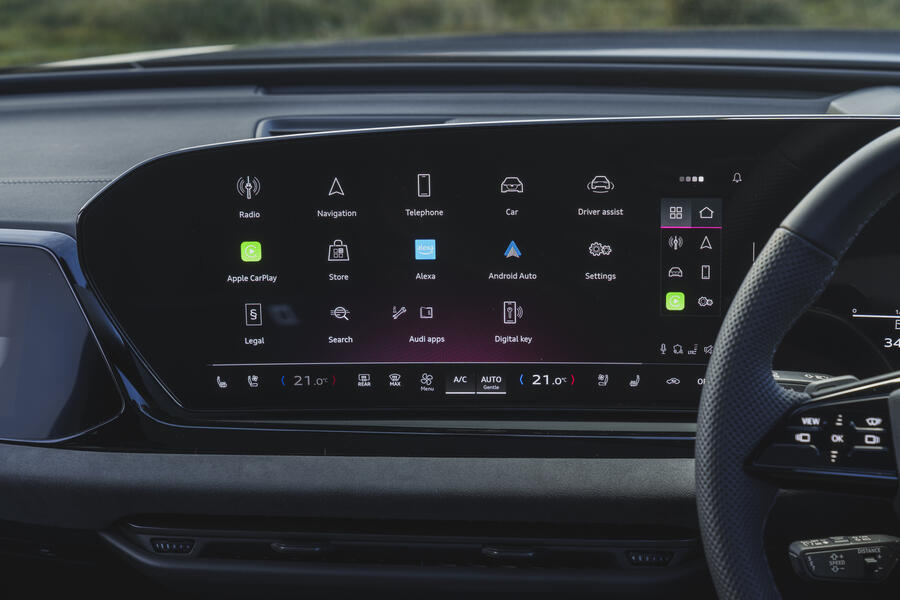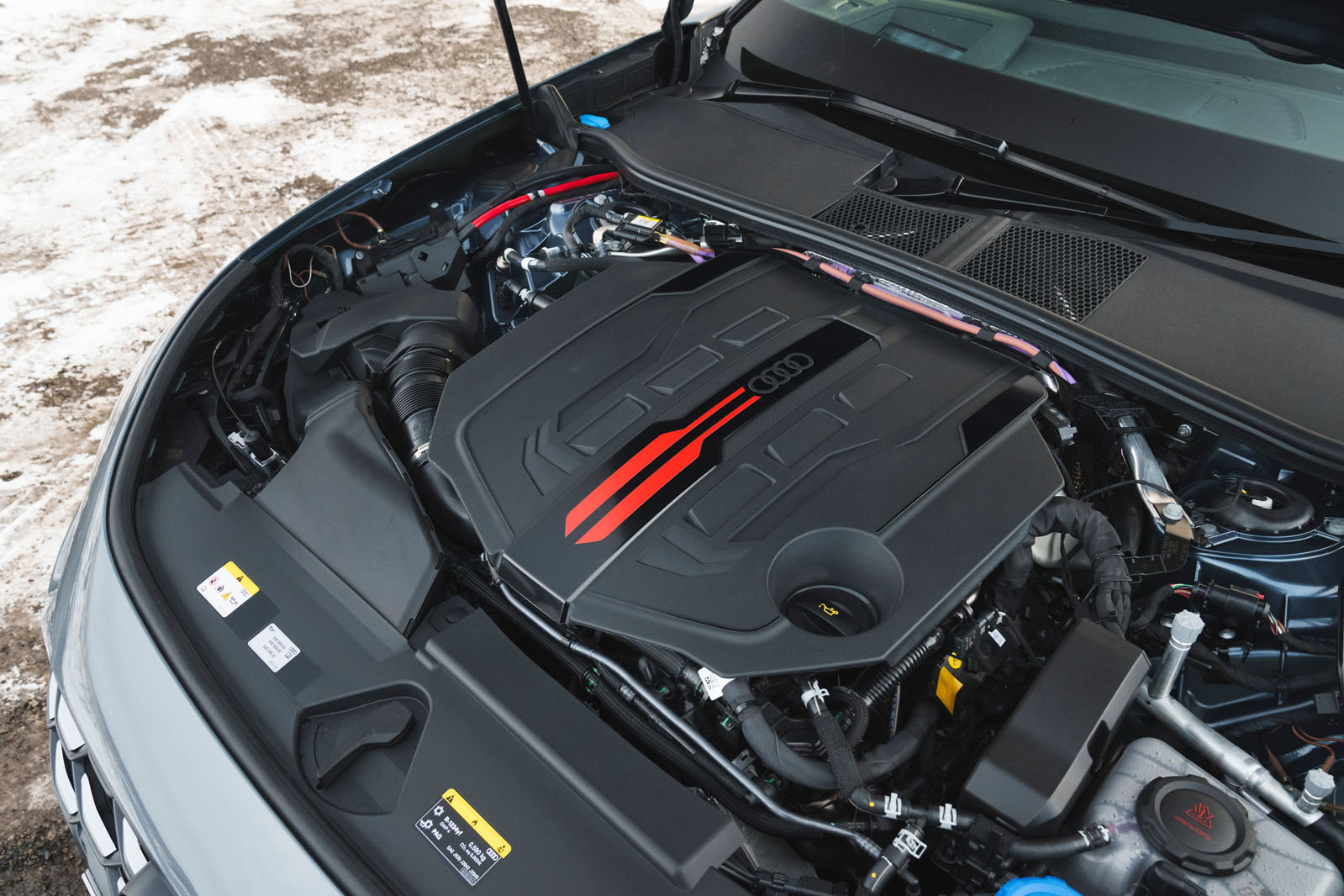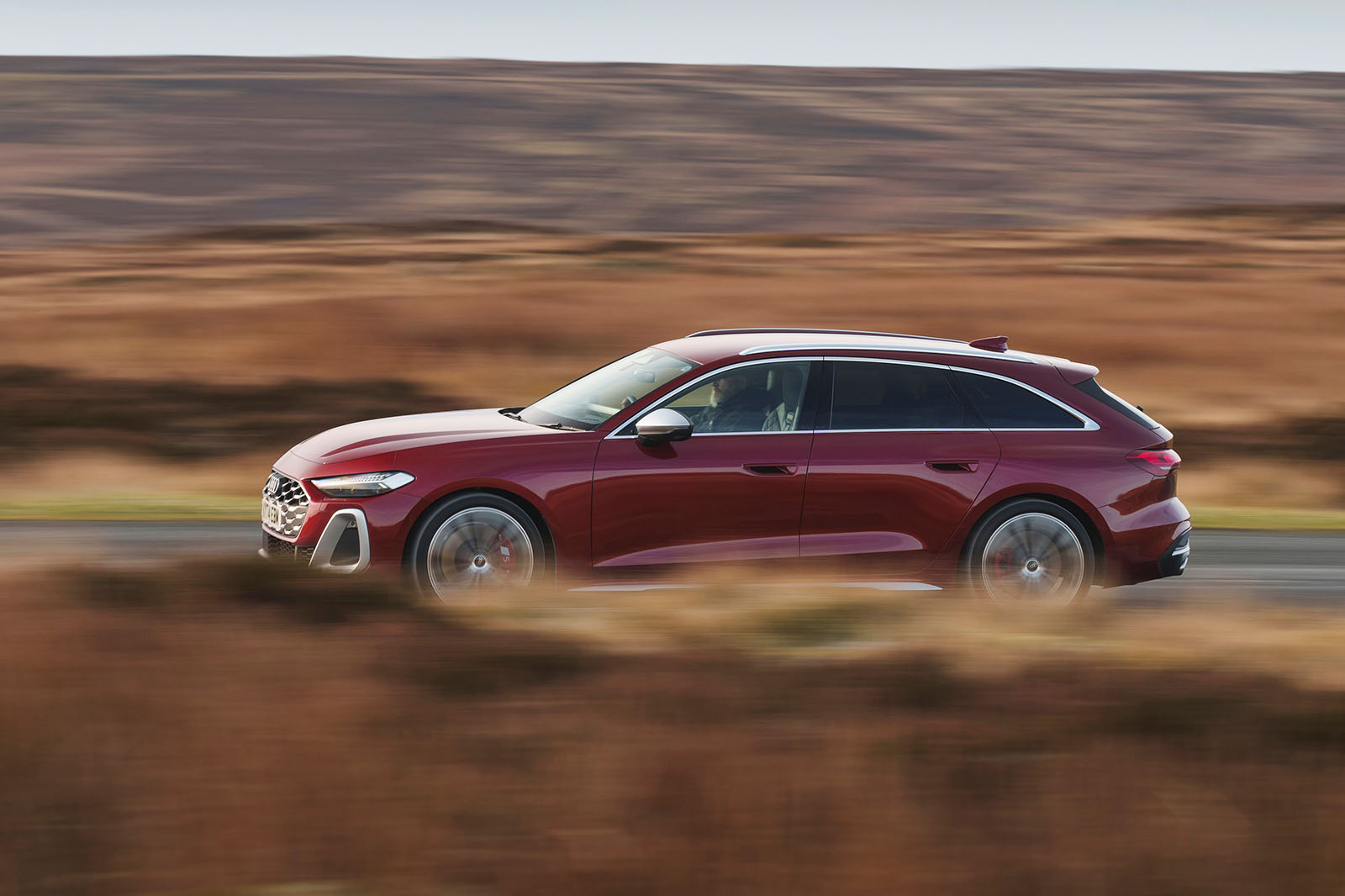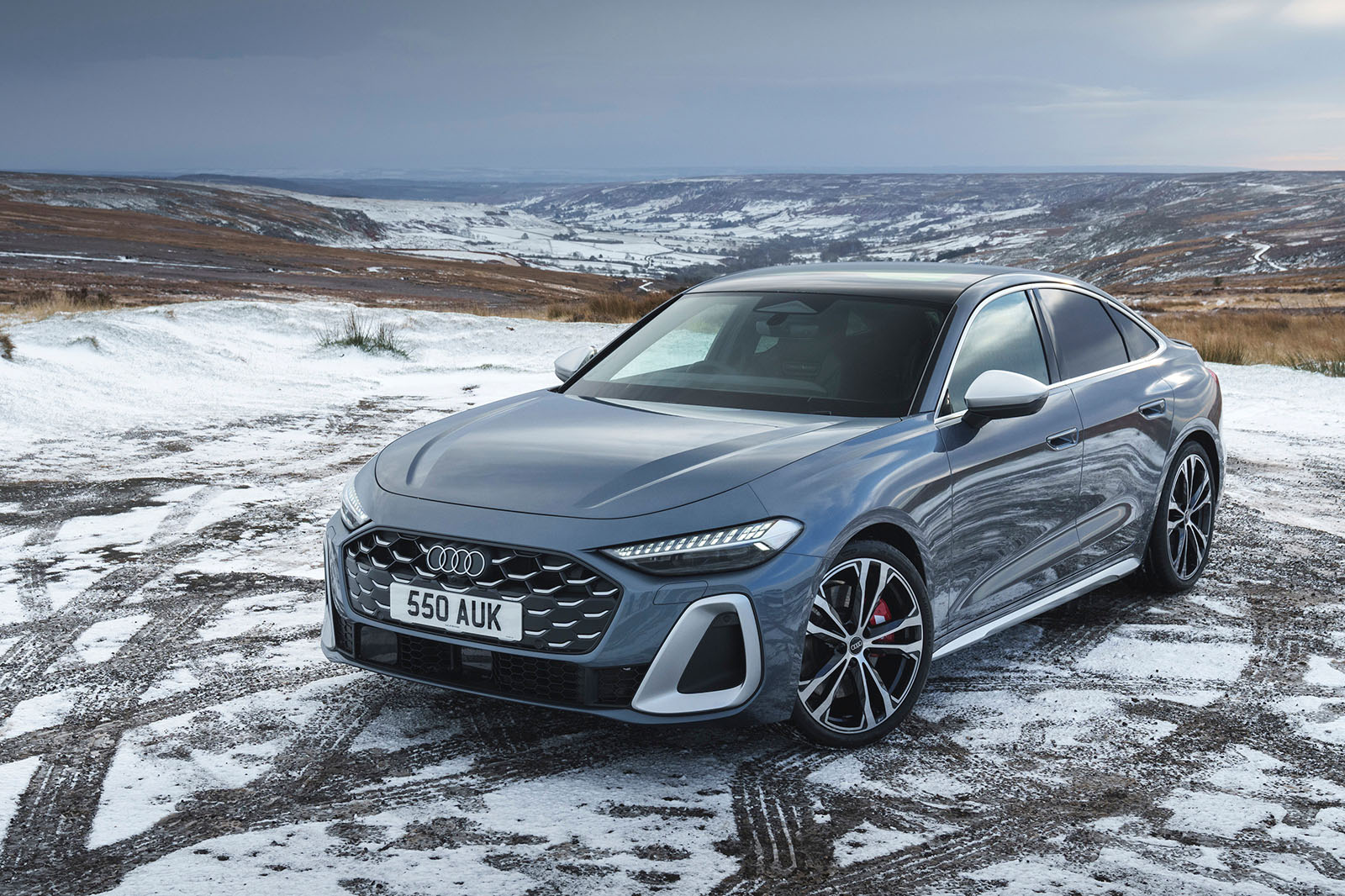With 362bhp, the new S5 is no particular step up from what went before. The old S4 had 349bhp before it got a diesel engine and the rival BMW M340i has 369bhp but, as we will see, that’s plenty for an enjoyably quick sports saloon.
Despite being very slightly down on power and a good deal heavier, the S5 was broadly as quick in a straight line as the BMW M440i xDrive we tested in 2021. Up to 80mph, they are only a tenth of a second apart in all metrics, with the BMW getting slightly ahead at autobahn speeds. A 4.3sec 0-62mph time makes this a very quick car indeed, and it’s hard to see the need for any more performance.
The way the S5 deploys its power is surprisingly subtle. Audi could have made this car shout about itself much more, but we’re glad it hasn’t, because not everybody wants the sort of bravado that the upcoming RS5 is likely to provide.
In everyday motoring, the V6 is remarkably smooth and quiet. Setting the drive mode to Dynamic liberates a bit more exhaust noise, but it remains civilised at all times.
Inside the cabin at least, the engine doesn’t particularly sound like a V6. Instead, its sonic character is closer to the M340i’s straight six, all smooth and breathy. It doesn’t really seem synthesised either, with a hint of mechanical thrash making its way inside at certain rpm.
The hybrid system gives new dimensions to this powertrain, such as the ability to float around town or creep forward in heavy traffic without the engine wasting fuel. As the motor has only 24bhp, keeping the engine turned off requires a very light right foot, but that can be a fun game to play.
Thanks to the fairly large battery, the S5 can cover decent distances without rousing the engine. The motor also emits a slight whine during acceleration and regen, lending it a dash of character. Curiously, there’s no way to monitor the battery’s state of charge, which precluded low-SoC testing. Subjectively, we didn’t detect a drop-off in performance.
The engine drives through a seven-speed dual-clutch automatic and we wish Audi had stuck with an eight-speed torque-converter automatic. The dual-clutch unit has no notable advantage in shift speed, and although the smooth engagement of the electric motor can save the gearbox’s blushes at low speed, the car can lurch slightly when downshifting through the lower gears or when called on suddenly. This is accompanied by audible clattering too.
Occasionally, when switching between petrol and electric power, we detected some whirring noises, as if one of the drive sources wasn’t engaging properly. This promising new drivetrain concept could evidently do with a little more fine-tuning.
